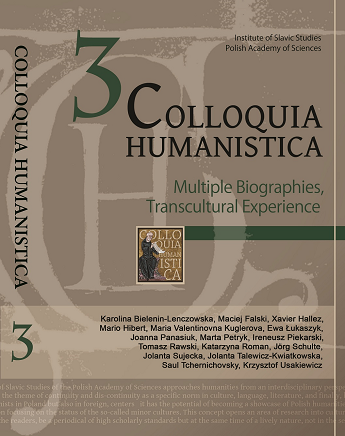“Ay, But Droma Pkhirdyom”: The Gypsy and the Road (Self Identity in Soviet and Post-Soviet Gypsy Literature in the Russian Cultural and Political Context)
“Ay, But Droma Pkhirdyom”: The Gypsy and the Road (Self-Identity in Soviet and Post-Soviet Gypsy Literature in the Russian Cultural and Political Context)
Author(s): Maria Valentinovna KuglerovaSubject(s): Social Sciences, Language and Literature Studies, Studies of Literature
Published by: Instytut Slawistyki Polskiej Akademii Nauk
Keywords: Gypsies; Gypsy literature; Soviet Union; Gypsy identity; road
Summary/Abstract: The Gypsies have always been a peculiar minority in Russia. On one hand, the Russians admired Gypsies’ vagrancy and desire for freedom. The Gypsies were a kind of an alter-ego of the Russians’ – as they wished to be, but dared not. On the other hand, the Gypsies even in relatively liberal czarist times were treated as the second-rate people, not mentioning the soviet deportations. The Gypsy wandering was especially irritating, so the authorities always tried to settle them down. From the Gypsies’ side the attitude (the strict opposition Gadjo/Roma and at the same time the phenomenon of the “choral” settled Gypsies who connected Russian and Gypsy cultures) was ambiguous, too. It shows the main feature of Gypsy identity – the desire for wandering, the dependence – but only on the road, and the dual attitude to this feature from the side of the Russian majority. This feature and the ambiguous attitude towards it one can define as the crucial feature of the Soviet and Post-Soviet Gypsy literature. By 1938 (before the supporting of the national minorities stopped) in Soviet Gypsy literature existed two main directions in the narration: the narration about the evil capitalistic past (the exploitation of the “choral” Gypsies, who were devoid of the road by Russians – M.Iljinsko’s stories) and the depicting of the brave Soviet reality – when the Gypsies are happy to work and to be settled in the kolkhozes (M.Bezludzko’s poems). This image of the new Soviet Gypsy is rooted in the image of the vagrancy (through its’ denial for Soviet epoch and its’ glorification for czarist times), as the detailed analysis of the texts shows.
Journal: Colloquia Humanistica
- Issue Year: 2014
- Issue No: 3
- Page Range: 57-76
- Page Count: 20
- Language: English

